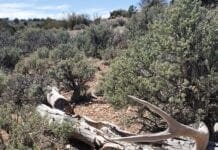Shed Hunting Tactics
By Aron Snyder
Shed hunting was once a hobby for me, but now it has become a bit more like an addiction; glassing open fields and tree lines, putting leather to the ground and coming back to the truck with a back full of bone is about as good as it gets in the months of spring and it’s a great way to cure the built up cabin fever from the winter months.
Now I’m not sure there’s such a thing a shed hunting expert, but if there was, I think I’m getting somewhat close to achieving that title (or I’d like to think so anyway).
A few of my fellow “shed heads” get together every spring and will generally find between 30-50 sheds in a couple weekends of hunting. We all have our preferred tactics and one is certainly not better than the other, but each of us are successful on every trip.
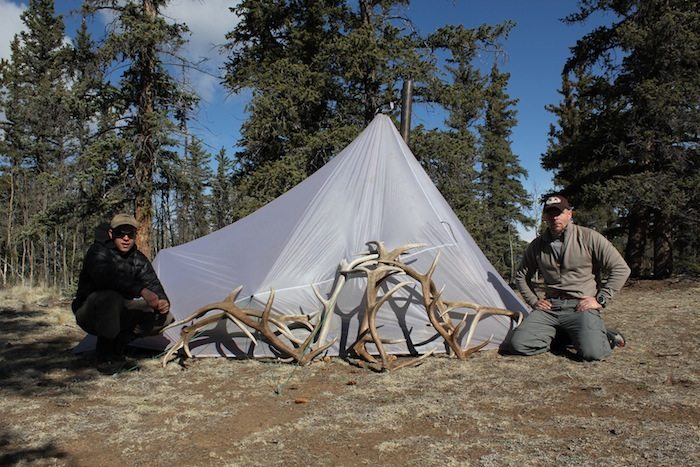
Glassing
This method isn’t much different than glassing for an animal; set up on a high point, get out the binoculars and start gridding out open fields and tree lines. When you think you have something spotted, break out the spotting scope and verify.
When I’m doing this, I start with hard wood tree lines first, picking apart every stick, twig or antler sticking up out of the grass.
After the tree line is picked clean, I will start gridding out the center of the meadow looking for anything that resembles an antler.
This tactic won’t find you every shed in the area, but you will at least know that anyone driving by won’t find them before you. That way you can mark off that spot as “glassed” and come back on foot at a later time for a closer look.
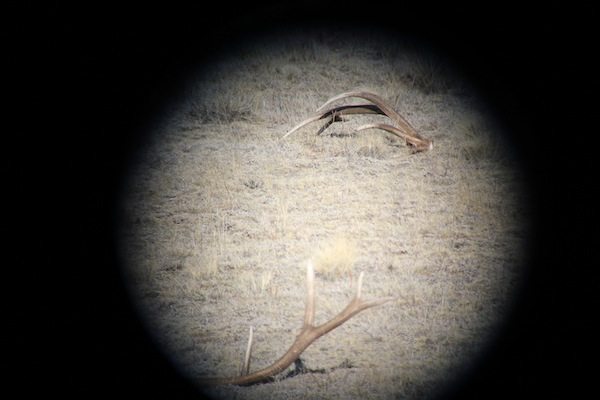
Fence lines
This is easy and simple, walk every fence line you have in the area, hoping to find a shed that has dropped off after a bull has jumped the fence.
Road Hunting
Finding success with this tactic is going to depend on the time your doing it more than a strategy. If someone has driven the road before you, chances are they will find anything close to the road. That doesn’t mean more sheds won’t drop on a later date, but there’s nothing worse than scanning the sides of a dirt road for miles and finding a couple other guys with a truck load of bone at the end of it.
Glassing is also going to play a huge part in road hunting for sheds and any meadow or field should be picked apart as quickly as possible. It’s first come first serve, so get the easy one out of the way.

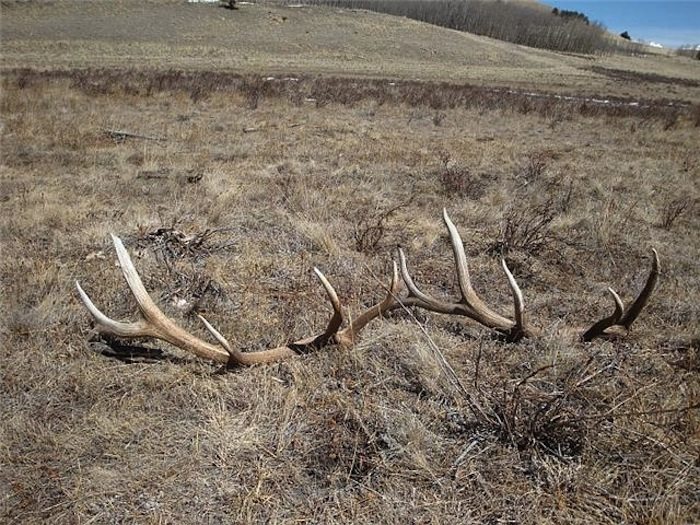
Sweeping the Road Side
The title of this may not make sense at first, but it’s a really easy way to find sheds.
Elk will usually feed through any grassy area they can find in the springtime, but if that area happens to be by a road, they will run into the closest tree line when they hear a motor vehicle getting close. With the elk running into the trees (and a little help from low hanging branches) you can bet that any patches of trees beside a roadway is going to have a few sheds laying in the middle.
We usually do a sweep of the trees with 3 or for guys, keeping a 10-meter spread and staying abreast the entire time.
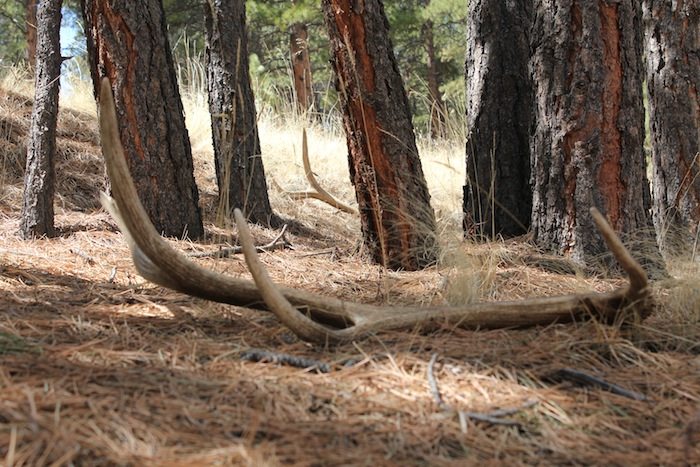
Boots on the ground
The more areas you walk the better chance of finding a shed, but I would break out the areas by the likelihood of finding something worthwhile.
- 1)Open Fields and grassy meadows
- 2)Aspen/hardwood meadows
- 3)Hardwood patches
- 4)Fence lines
- 5)Aspen and conifer transition areas
- 6)North facing timber
Keep in mind that shed hunting is cabin fever release as much as anything, so load up all the new cool gear you’ve acquired through the winter, break in your new boots and take some elk stakes out of the freezer… it’s going to be a fun trip!

















